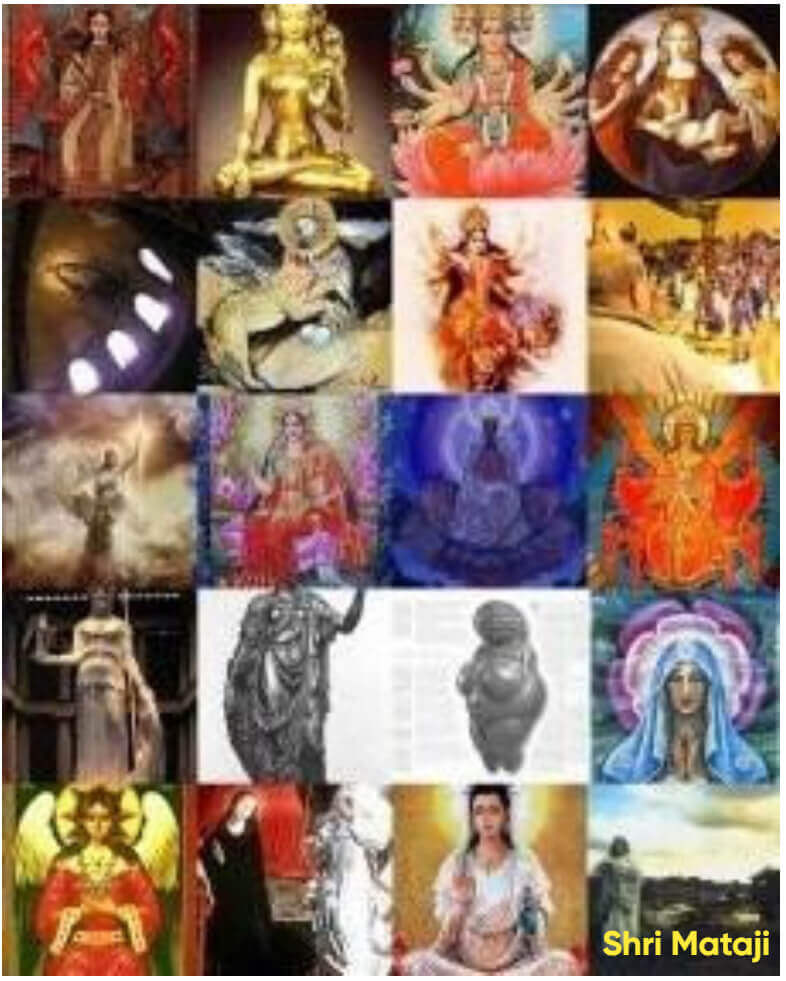The Great Deception: How Pentecost Inaugurated the Prince of the World
1. The Manufactured Cornerstone: A Papacy Without Foundation
The modern Catholic Church rests upon the twin pillars of papal supremacy and infallibility, doctrines that grant the Bishop of Rome supreme and unerring authority on matters of faith and morals. The Church teaches that this authority traces in an unbroken line back to the Apostle Peter, whom they consider the first pope. However, a rigorous examination of early Christian history and the writings of the Church Fathers reveals a starkly different picture. The elaborate edifice of papal authority is a later construction, a political and theological innovation, not a divine institution established by Christ.
Critics and even former Catholic priests have pointed out the glaring absence of any concept of a "Petrine office" in the early centuries of Christianity. The idea that the Bishop of Rome held jurisdiction over all other churches was unheard of. Controversies that would today trigger an immediate appeal to the Vatican were, for centuries, resolved through regional synods and councils, with the Bishop of Rome being just one, albeit respected, voice among many. The development of papal primacy was a gradual process, driven by a confluence of political and theological factors, particularly after the fall of the Western Roman Empire when the papacy became a source of continuity and authority. The doctrine of papal infallibility, so central today, was only formally defined at the First Vatican Council in 1870, a move that was met with considerable controversy at the time.
2. The Unspoken History: A Void in the Patristic Record
Peter de Rosa, a former Catholic priest and graduate of Rome's Gregorian University, highlights this historical void with devastating clarity in his work, Vicars of Christ: The Dark Side of the Papacy. He states:
"After Peter, the centuries roll by, full of controversies, any one of which today would involve immediate recourse to Rome for a decision... We have already noted that not a single Father can find any hint of a Petrine office in the great biblical texts that refer to Peter. Papal supremacy and infallibility, so central to the Catholic church today, are simply not mentioned. Not a single creed, nor confession of faith, nor catechism, nor passage in patristic writings contains one syllable about the pope, still less about faith and doctrine being derived from him."
This silence is deafening. If the papacy were the divinely ordained structure for Christ's Church, its foundational principles would be evident in the teachings of the apostles' immediate successors. Instead, we find a historical narrative retroactively fitted to justify a power structure that emerged over centuries. The claims of an unbroken apostolic succession from Peter are undermined by the simple fact that the early Church Fathers themselves show no awareness of such a system. While some early writers acknowledged Rome's importance due to its connection with both Peter and Paul, this was a "primacy of honour," not a universal jurisdiction. The Eastern churches, for instance, never accepted the regular jurisdiction of Rome.
3. Pentecost Re-examined: The Arrival of the Prince of this World
The Catholic Church celebrates Pentecost as its birthday, the moment the Holy Spirit descended upon the apostles and empowered them to begin their public ministry. This event is seen as the fulfillment of Christ's promise to send a Paraclete, or helper. However, this interpretation ignores another, more ominous warning from Jesus. In John 14:30, just before his ascension, Jesus tells his disciples, "I will not speak with you much longer, for the prince of this world is coming, and he has no claim on Me."
The traditional interpretation identifies this "prince" as Satan. This paper proposes a radical re-reading: Pentecost, occurring just days after this warning, was not the advent of the Holy Spirit as comforter and guide, but the arrival of this very "prince of this world." The "mighty rushing wind" and "tongues of fire" were not a divine anointing but a deceptive spectacle, inaugurating an institution that would become a temporal power, a "god of this world" that would blind the minds of unbelievers.
The subsequent history of the papacy, as documented by de Rosa and others, provides a grim catalog that supports this interpretation. The institution claiming descent from Pentecost quickly became embroiled in worldly power, corruption, and violence that stands in stark opposition to the teachings of Jesus. Popes engaged in forgery to bolster their claims to power, instigated wars, sanctioned torture through the Inquisition, and lived lives of shocking depravity. This history is not an anomaly or a series of unfortunate deviations; it is the natural expression of an institution founded not on the rock of Christ, but on the ambitions of the "prince of this world."
4. Conclusion: A Church Born of Deception
The claim that the Catholic Church was born on Pentecost Sunday is a foundational myth that crumbles under historical scrutiny. The absence of any concept of papal supremacy or a Petrine office in the early Church, as attested by numerous sources including the critical work of Peter de Rosa, demonstrates that the core of the modern Catholic power structure is a later invention.
By re-evaluating Pentecost not as the birth of the Church of Christ, but as the deceptive arrival of the "Prince of the World" forewarned by Jesus, the subsequent dark history of the papacy becomes coherent. It is not a story of a divine institution falling into sin, but of a worldly one fulfilling its inherent nature. The centuries of corruption, hypocrisy, and violence are not a betrayal of its origins, but a confirmation of them. The institution that claims to be the Vicar of Christ has, for much of its history, more accurately reflected the ambitions of the prince of this world.
5. A Legacy of Corruption: The Papacy as a Worldly Kingdom
The historical record of the papacy provides overwhelming evidence that this institution, far from being the divinely protected Church of Christ, has consistently manifested the characteristics of what Jesus warned would be the kingdom of the "Prince of this World." The centuries following Pentecost reveal not a gradual corruption of a pure institution, but the systematic expression of an inherently worldly power structure that prioritized temporal authority, material wealth, and carnal pleasure over spiritual truth.
5.1 The Forging of Power: Deception as Foundation
The early papacy's rise to temporal power was built upon a foundation of deliberate deception that would characterize its methods throughout history. The most notorious example is the "Donation of Constantine," a forged document that claimed the Roman Emperor Constantine had granted the Pope supreme authority over the Western Roman Empire. This fabrication, created in the 8th century, was used for centuries to justify papal claims to temporal sovereignty over kings and emperors.
As de Rosa documents, this forgery was so crude that it contained obvious anachronisms and historical impossibilities, yet the papacy continued to assert its authenticity even after it was definitively proven false in 1517. The willingness to base fundamental claims to authority on known forgeries reveals an institution more concerned with power than truth—a characteristic that aligns perfectly with the nature of the "Prince of this World" rather than the Church of Christ.
The pattern of deception extended far beyond this single document. Pope Gregory VII enlisted "a whole school of forgers" to provide him with fabricated documents supporting papal supremacy. These false decretals and pseudo-historical texts were systematically used to override legitimate church councils and establish papal authority where none had existed before. This was not the work of isolated corrupt individuals, but a systematic institutional policy of deception spanning centuries.
5.2 The Depths of Depravity: A Catalog of Corruption
The moral corruption that plagued the papacy from its earliest centuries provides perhaps the most damning evidence against its claimed divine origin. De Rosa's exhaustive research, drawing from "impeccable Catholic sources, papal documents, letters of reforming saints," reveals a pattern of depravity so systematic and enduring that it cannot be dismissed as mere human weakness within a divine institution.
The sexual corruption was endemic and institutionalized. As de Rosa documents:
"Monasteries full of women; every friar had his 'Martha', every nun her lover. Bishops, in every sense the fathers of their people, kept harems."
This was not hidden vice but open practice. The papacy itself profited from this corruption through the "infamous cullagium, a charge for keeping concubines... bishops and archdeacons themselves benefited from this sex-tax; in Rome, it was the pope."
The scale of this corruption defies comprehension:
"Young men who spent their youth in rape and adultery were rising in the ranks of the clergy. They were spending their nights with four or five women, then getting up in the morning — in what state, he leaves to the imagination — to celebrate mass."
The very sacraments that the Catholic Church claims as channels of divine grace were being performed by men who had spent the previous night in debauchery.
The corruption extended to the highest levels of the hierarchy. Pope Benedict V "had to flee Rome after dishonouring a young girl before being eventually murdered by a jealous husband and having his corpse paraded through the streets and dumped in a cesspool." Pope John XII "was caught cheating with a married woman by her husband and killed in flagrante delicto with a hammer blow to the back of the head."
Even more disturbing was the systematic abuse of religious institutions:
"Many monasteries were the haunts of homosexuals, many convents were brothels."
St. Alban's Abbey "was nothing but a den of prostitutes serving the local monks. Nuns were regularly raped therein and the entire place, in a phrase worthy of Shakespeare, was 'riot of seed and blood.'" In London, "the parish of St John Zachary... provided a brothel exclusively for priests and nuns."
The scope of this corruption was so vast that by the 15th century, an official report in England found that "144 religious houses were equal in viciousness to Sodom; countless convents, served by 'lewd confessors,' were full of children; clergy — abbots, monks and friars — were carrying on not merely with whores but with married women."
5.3 The Suppression of Dissent: Violence as Doctrine
The papacy's response to challenges to its authority reveals another characteristic of the "Prince of this World"—the use of violence and terror to maintain power. The establishment of the Inquisition represents perhaps the most systematic institutionalization of religious terror in human history. This was not a defensive measure against external threats, but an offensive weapon designed to crush internal dissent and maintain papal supremacy.
The Crusades, while ostensibly directed against external enemies, were equally used to eliminate Christian groups that challenged papal authority. The Albigensian Crusade against the Cathars in southern France was particularly revealing. These Christians, who emphasized personal piety and rejected the material wealth of the institutional church, were systematically exterminated with papal blessing. The famous command to "kill them all, God will know his own" epitomizes the papacy's approach to dissent.
The theological justification for this violence came directly from papal doctrine. The principle that "error has no rights" was used to justify the torture and execution of those who disagreed with papal teaching. This represents a fundamental inversion of Christ's teaching about loving one's enemies and turning the other cheek. Instead of following the example of Christ, who refused to call down fire from heaven even on those who rejected him, the papacy called down literal fire on those who questioned its authority.
5.4 The Invention of Doctrine for Profit: Purgatory and the Sale of Salvation
Perhaps no single development better illustrates the worldly nature of the papal institution than the creation of the doctrine of Purgatory and the subsequent sale of indulgences. This represents the commodification of salvation itself—the transformation of spiritual concerns into material profit.
The doctrine of Purgatory, unknown to the early Church and absent from Scripture, was gradually developed to serve the financial needs of the papacy. As de Rosa notes, "The Pope invented Purgatory so he could sell indulgences in order to allow souls out!" This was not a theological development driven by spiritual insight, but a financial innovation designed to generate revenue.
The sale of indulgences reached its most scandalous expression under Pope Leo X, who needed funds to complete St. Peter's Basilica. The papal agent Johann Tetzel's famous jingle, "As soon as the coin in the coffer rings, the soul from purgatory springs," perfectly captures the crass commercialization of what should have been matters of eternal significance.
This practice was so obviously corrupt that it sparked the Protestant Reformation. Martin Luther's 95 Theses were primarily concerned with the sale of indulgences, which he correctly identified as a fundamental perversion of the Gospel. The fact that the papacy was willing to risk schism rather than abandon this lucrative practice reveals where its true priorities lay.
5.5 The Testimony of Contemporary Witnesses
The corruption of the papacy was so evident that even its own supporters were forced to acknowledge it. During the reign of the Borgia Pope Alexander VI, the Florentine friar Savonarola observed:
"The nuns were worse than harlots. As to the clergy, 'one priest spends the night with his concubine, another with a little boy, and in the morning they proceed to the altar to celebrate Mass. What do you think of that? What do you make of such a Mass?'"
Bishop Grosseteste of Lincoln wrote to Pope Innocent IV in 1250, declaring of the priests: "They are in truth teachers of heresy, inasmuch as the word of action is mightier than the word of speech." The recognition that the clergy's actions were teaching heresy more effectively than their words could teach truth represents a devastating indictment of the institution.
By 1414, the situation had become so scandalous that King Henry V asked the University of Oxford to prepare articles for church reform. Article 39 began: "Because the carnal and sinful life of priests today scandalizes the entire church and their public fornication goes completely unpunished..." The fact that secular authorities felt compelled to intervene in church affairs because of clerical corruption demonstrates how far the institution had fallen from any claim to moral authority.
The ultimate judgment came from the people themselves. As de Rosa records, by the late medieval period, "A proverb passes from mouth to mouth: 'The profession of the priest is the surest road to hell.'" When the common people, who were supposed to look to the clergy for spiritual guidance, instead viewed the priesthood as a path to damnation, the institution had clearly failed in its most basic mission.
5.6 The Pattern Revealed: Not Corruption but Nature
This extensive catalog of corruption, violence, and deception cannot be dismissed as the unfortunate failings of individual bad actors within an otherwise good institution. The pattern is too consistent, too systematic, and too enduring to be explained as mere human weakness. Instead, it reveals the true nature of an institution that, from its alleged founding on Pentecost, has consistently manifested the characteristics of a worldly kingdom rather than a spiritual one.
The papacy's history demonstrates a consistent prioritization of temporal power over spiritual truth, material wealth over evangelical poverty, and institutional preservation over moral integrity. These are precisely the characteristics one would expect from an institution founded not by the Holy Spirit, but by the "Prince of this World" whom Jesus warned would come.
The fact that this corruption persisted through centuries of attempted reform, survived multiple schisms and challenges, and continued even after being repeatedly exposed and condemned, suggests that it was not an aberration but the natural expression of the institution's fundamental character. An institution truly founded by God and protected by divine grace could not have maintained such a consistent pattern of worldly behavior across so many centuries.


